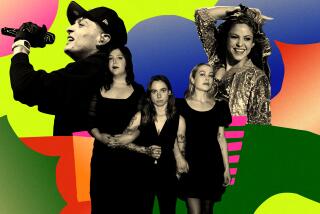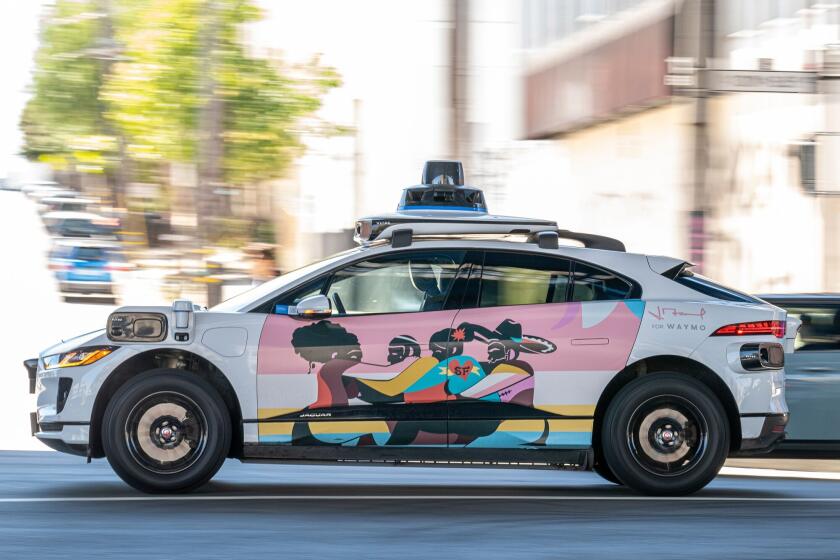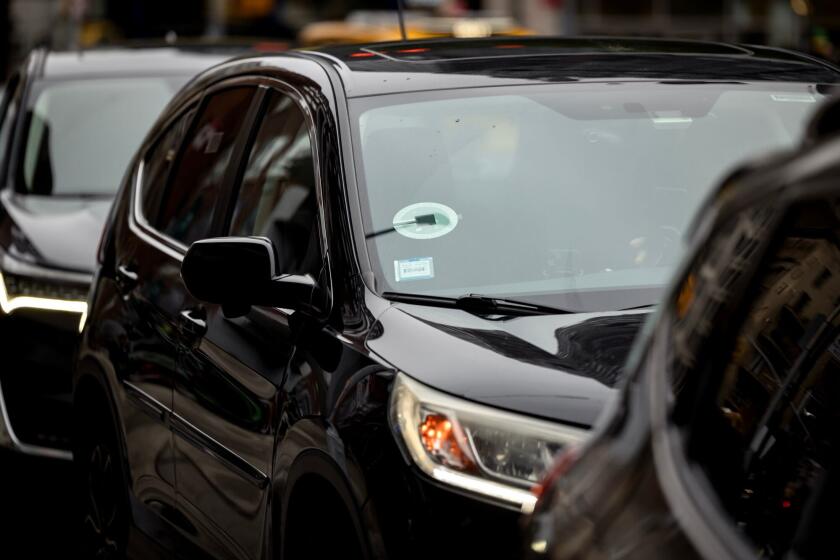America’s space program thrust a variety of...
- Share via
America’s space program thrust a variety of new, colorful names into the heavens: Apollo, Columbia, Challenger, Discovery, Atlantis and Endeavour to name a few of NASA’s best-known missions. It also gave a new, sleek identity to the suburban city where these space vehicles were assembled: Downey.
The city’s founder, John G. Downey, arrived in Los Angeles in 1850. The Irish pharmacist had come to California eager for a share of the Gold Rush. But, unable to endure the rigors of gold mining, he opened the first drugstore in the now-vanished Downey Block at Main and Temple streets.
After immersing himself in politics and serving as governor from 1860 to 1862, he returned to Los Angeles and helped start the first bank here. As a moneylender, he was known for foreclosing without mercy on notes and mortgages. While some lenders were giving mortgages on land at 2%, Downey and a few of his cronies were insisting on 5% to 10%.
In the 1870s, he cleared out farms and began building homes on a tract a dozen miles southeast of downtown Los Angeles in what he called Downey City. By 1874, city leaders had persuaded the government to bypass two other established towns and lay railroad tracks through the middle of Downey.
In the 1950s and 1960s, with the growth of the aircraft industry, the boom years began and houses popped up like mushrooms on 12.7 square miles among orange groves and dairy farms.
By 1964, at the height of the development, most of the 35,000 employees of North American Aviation (the forerunner of Rockwell International Corp.) worked at the Downey plant. Today, about 3,000 workers are employed at the Downey facility, where they continue development of an advanced space shuttle orbiter and satellite system. But to many, the plant remains most closely linked to the Apollo space missions, which enabled men to walk, drive and hit golf balls on the moon.
DOWNEY TIDBITS
Shrine: Downey became a shrine of sorts to the troublemaking kid Dennis the Menace after his March 11, 1951, TV debut. The popularity of the program led the city to unveil a children’s playground named Dennis the Menace Park.
Epitaph: The headstone of Indian Joe, a 19th century Downey resident who was something of a medicine man, disappeared in 1988. A duplicate marker was erected bearing the original painted inscription: “He was a good Indian while he lived. He belonged to the Kaweah. He lived in Downey 22 years and died Nov. 22, 1895.”
The Carpenters: The first inductees into Downey High’s Hall of Fame were graduates Karen and Richard Carpenter, the brother-sister singing team. After they gained success, they became owners of some apartments in their hometown that they named “Close to You” and “Only Just Begun” after their hit recordings.
Lost Bucks: Last year, Downey officials discovered that members of the City Council were granted a cost-of-living raise nine years ago, an increase they never received because of an unexplained foul-up.
McProtests: A 1953 architectural treasure, a red-and-white tiled McDonald’s topped by original mascot Speedee the Chef at Florence Avenue and Lakewood Boulevard, closed in 1994, despite urgings to keep it open from President Clinton, Gov. Pete Wilson and U.S. Rep. Steve Horn (R-Long Beach). The corporation said Speedee and the old fast-food dispensary didn’t bring in enough revenue.
(BEGIN TEXT OF INFOBOX / INFOGRAPHIC)
By The Numbers
City Business
Incorporated: Dec. 17, 1956
Square miles: 12.5
Number of parks: 7
City employees: 700
1995-96 budget: $53 million
*
People
Population: 91,444
Households: 33,003
Average household size: 2.71
Median age: 33.2
*
Ethnic Breakdown
Asian: 8%
Black: 3%
Latino: 32%
White: 56%
Other: 1%
*
Money and Work Median household income: $36,991
Median household income / L.A. County: $34,965
Median home value: $227,300
Employed workers (16 and older): 44,959
Percentage of women employed: 56.7%
Percentage of men employed: 76.7%
Self-employed: 3,482
Car- poolers: 5,893
*
Retail Stores
Number of stores: 748
Number of employees: 6,548
Annual sales: $828 million
*
Families
Non-family households: 28%
Married couples with children: 26%
Married couples with no children: 29%
Other types of families: 17%
Source: Claritas Inc. Household expenses are averages for 1994. All other figures are for 1990. Percentages have been rounded to the nearest whole number.
More to Read
Inside the business of entertainment
The Wide Shot brings you news, analysis and insights on everything from streaming wars to production — and what it all means for the future.
You may occasionally receive promotional content from the Los Angeles Times.










